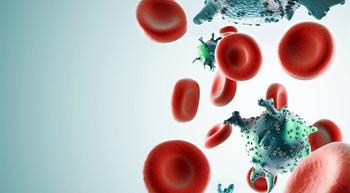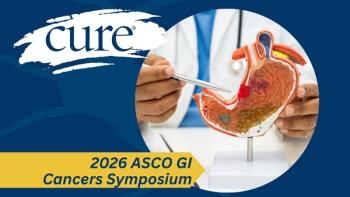
Meeting the Man Behind the Bone Marrow
After extensive chemo treatment was completed, intended to kill all the leukemic cells in my sick body, a courier was sent to Israel to collect the harvested marrow from my donor, and immediately fly it back to the U.S. where I was to be infused.
“Hello Mr. Stromberg,” the email read. “I hope you are doing well. I’ve been asked to check if you are available and willing to participate in an event in May at the City of Hope, specifically the annual Bone-Marrow Transplant Survivors Reunion?
Your doctor has requested we reach out to your donor as well. If both parties are available and agree to participate, we hope to arrange a meeting between you and your donor. Please correct me if inaccurate, but I understand you have exchanged correspondence with your donor, but not met.”
My heart nearly jumped into my throat when I read this, but let me explain…
Six years ago I was diagnosed with AML, Acute myeloid leukemia. I was a pretty healthy and fit 70 year old man, so this diagnosis came as a complete surprise. Immediately hospitalized, I learned that the treatment for this often lethal disease could easily kill me. Cycles of intensive chemo followed by a bone-marrow transplant were prescribed, but surviving chemo, then finding a donor might not be so easy.
I was told that a donor match is determined by DNA, which I learned is largely based on ethnicity. “Great,” I thought. “I’m a white guy, the largest demographic.” “Not so fast, Mr. Caucasian,” I was told. You’re an Ashkenazy Jew, a very small demographic. And so your chances of finding a donor aren’t so great. But, against the odds, a search began.
The organization BE THE MATCH manages the largest and most diverse bone-marrow donor registry in the world. My DNA, the thread-like chain of my genetic information, was sent to them in hopes of finding a match. Two anxious weeks passed before I received a call from BTM with the good news. Not only a match, but a perfect match had been found! A 33 year old Israeli man was my DNA twin and he had agreed to donate some of his bone-marrow to me.
After extensive chemo treatment was completed, intended to kill all the leukemic cells in my sick body, a courier was sent to Israel to collect the harvested marrow from my donor, and immediately fly it back to the U.S. where I was to be infused. Laying in that hospital bed, clothed only in diapers and unable to do anything for myself, I spent my time contemplating my life and surrendering to the God of my understanding.
If this was the final curtain, I decided I was okay. I’d led a blessed life, grew up in a good family, had an amazing career, an ex-wife that I still loved and who loved me, two great young adult kids and a large circle of friends who were intent on praying me back to health.
The aftermath of the bone-marrow infusion was sometimes touch-and-go. The first month post-transplant is when all kinds of funky things can and do happen, and when death is often the outcome. In my case, I had a relatively easy time of it. I guess God wasn’t finished with me yet. One of the amazing things I learned about my transplant is that I had become my donors blood type. “How weird is that,” I thought.
After a month spent in an isolated hospital room my new immune system started to kick in and I was allowed to go home to begin a lengthy recovery period. Slowly, but surely, I regained my strength, both mentally and physically, and within a couple of months I started to get my life back.
On one of my frequent visits to the City of Hope for post-transplant follow up, I inquired about the possibility of meeting my donor. I was told that I needed to wait two years before BE THE MATCH would reach out to him and see if he would like to be in contact with me. “Why so long,” I inquired? The answer, while logical, caught me off-guard.
“We wait this long, because if you should die, your donor might be emotionally distraught over the news. Statistically, if you survive two years, you are cured of your leukemia, so we wait.”
That made sense, so I tried not to think about my donor during those long 24 months. When the appropriate amount of time had passed I asked again about connecting with him and was told to fill out a request form. I eagerly did as instructed and waited a few anxious weeks in anticipation of hearing something. When nothing happened, I called BTM, inquired about my request and was told my donor hadn’t responded.
I was heartbroken. I was so wanting to connect and thank him. I asked the BTM rep if there was anything else I could do and was told I could write him a brief note, very general, not saying anything personal, and if he didn’t respond this time, that would be it. Again, I followed instructions and wrote a brief note expressing my desires and tried to let it go.
Three more weeks passed, so I thought this was it. He doesn’t want to connect with me. I was disappointed but tried to just remember the gift he gave me and to honor his wishes. Another week passed and I was pretty much over the disappointment, when my phone informed me I missed a call from the City of Hope. I returned the call and was greeted by a very cheery woman, who said, “Guess what? Your donor has finally responded and said it was okay to give you his name and address.” I think the smile on my face lit up my living room, as I nearly fell off the couch!
I immediately went to my computer and looked him up on Facebook, and there he was. I’ll call him Moses, not his real name, but appropriate given how he set me free. Moses is a Russian immigrant living in Israel, and he doesn’t speak much English, but we’ve communicated a few times and I’ve got to tell him how much his gift has meant to me and my family.
After I was informed that the City of Hope had chosen me to meet Moses in person, I reached out to him and his wife to let them know how excited I was to be meeting them. There will be around 3000 bone-marrow transplant survivors at the reunion, a really big-deal for those of us whose lives have been saved from this dreaded disease. It’s a day filled with celebration and gratitude, and for me it will be something extra special.
I’ll tell you all about it in the next column I write.




